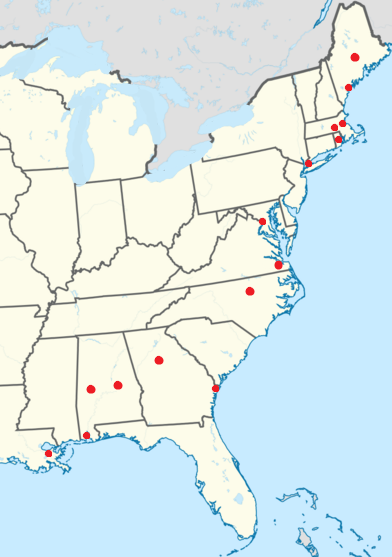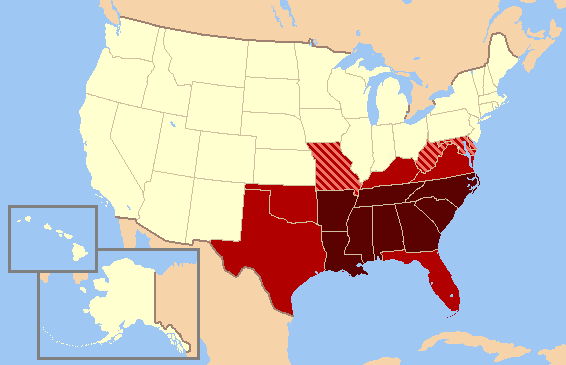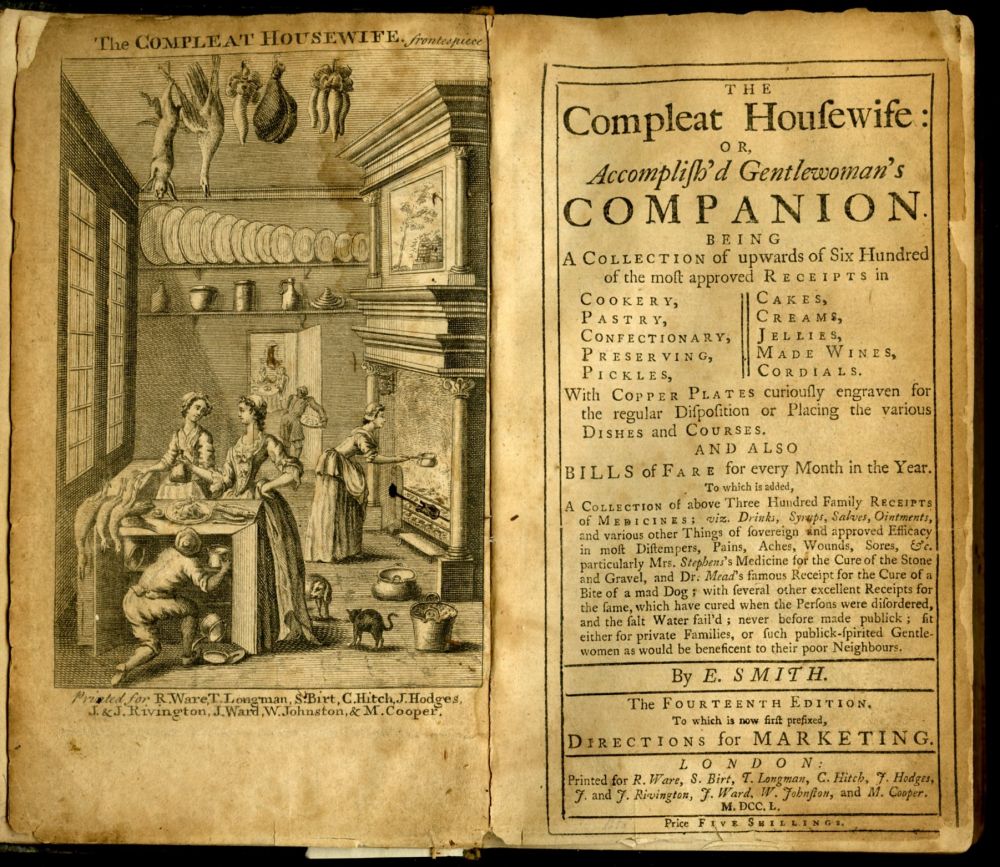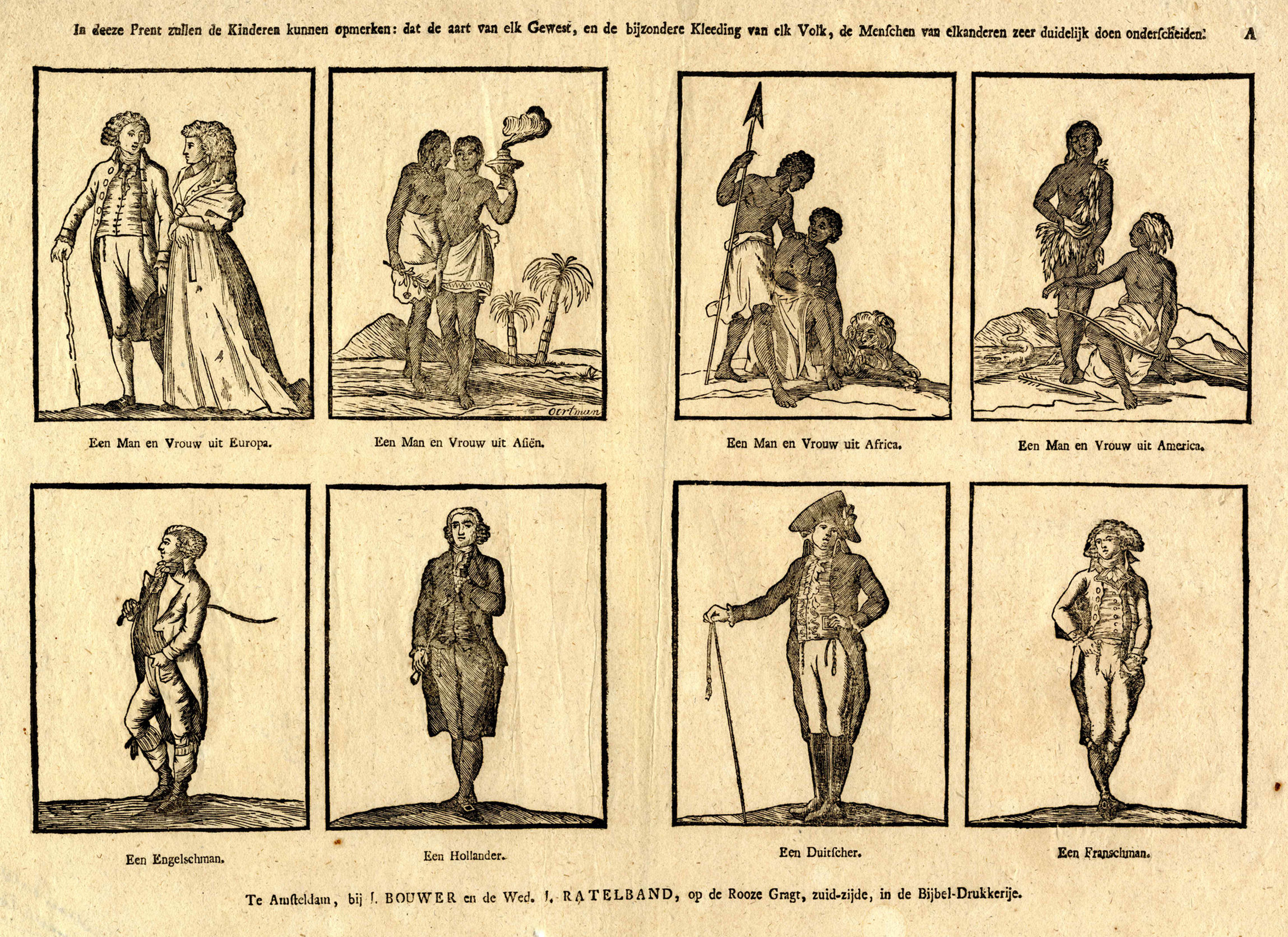|
Southern Hospitality
Southern hospitality is a phrase used in American English to describe a cultural stereotype of the Southern United States, with residents perceived to show kindness, warmth, and welcoming of visitors to their homes, or to the South in general. Origins Although Southerners from all walks of life have been perceived as friendly for centuries, some like the writer Anthony Szczesiul claim that Southern hospitality "first existed as a narrowly defined body of social practices among the antebellum planters classes". As such, the origin of the practice was intimately tied to slavery in the United States. One analysis notes: Over time however, the concept "developed into a discourse that stretches far beyond the image of the planter class", and the principles of Southern hospitality were eventually adopted by non-planter class and Southern African Americans as well, and incorporated into materials used to advertise destinations in the South to other African American tourists. The co ... [...More Info...] [...Related Items...] OR: [Wikipedia] [Google] [Baidu] |
American English
American English, sometimes called United States English or U.S. English, is the set of variety (linguistics), varieties of the English language native to the United States. English is the Languages of the United States, most widely spoken language in the United States and, since 2025, the official language of the United States. It is also an official language in 32 of the 50 U.S. states and the ''de facto'' common language used in government, education, and commerce in all 50 states, the District of Columbia, and in all territories except Puerto Rico. Since the late 20th century, American English has become the most influential form of English worldwide. Varieties of American English include many patterns of pronunciation, vocabulary, grammar, and particularly spelling that are unified nationwide but distinct from other forms of English around the world. Any North American English, American or Canadian accent perceived as lacking noticeably local, ethnic, or cultural markedness ... [...More Info...] [...Related Items...] OR: [Wikipedia] [Google] [Baidu] |
Shirley Abbott (author)
Shirley Jean Tomkievicz ( Abbott; November 16, 1934, Hot Springs, Arkansas – April 8, 2019, Portland, Oregon) was an American magazine editor, writer, journalist, and historian. Early life and education Born Shirley Jean Abbott in Hot Springs, Arkansas, her father was a bookmaker who took bets on illegal, off-track horse races, but was quixotically a well-respected member of the community.Michael J. Hamann,She looks back without anger, ''The South Bend Tribune'' (September 29, 1991), p. F9. Abbott graduated in 1952 from high school in Hot Springs, Arkansas, as class valedictorian and in 1956 with a bachelor's degree (''cum laude'') in English and French from Texas State College for Women (renamed in 1957 Texas Woman’s University). In 1956 she, as one of the winners of an essay contest, was one of twenty young women that ''Mademoiselle'' magazine's editors selected as paid guest editors in New York City for their College Issue. Abbot took the job in New York City to escape t ... [...More Info...] [...Related Items...] OR: [Wikipedia] [Google] [Baidu] |
Culture Of The Southern United States
The culture of the Southern United States, Southern culture, or Southern heritage, is a subculture of the United States. From its many cultural influences, Southern United States, the South developed its own unique customs, Southern American English, dialects, arts, Southern literature, literature, Southern US cuisine, cuisine, dance, and Country music, music. The combination of its unique history and the fact that many Southerners maintain—and even nurture—an identity separate from the rest of the country has led to it being one of the most studied and written-about regions of the United States. During the 1600s to mid-1800s, the central role of agriculture and slavery during the Thirteen Colonies, colonial period and Antebellum South, antebellum era economies made society stratified according to land ownership. This landed gentry made culture in the early Southern United States differ from areas north of the Mason–Dixon line and west of the Appalachian Mountains, Appalac ... [...More Info...] [...Related Items...] OR: [Wikipedia] [Google] [Baidu] |
Seattle Freeze
The Seattle Freeze is, according to widely held belief, a difficulty with making new friends in the American city of Seattle, Washington, particularly for transplants from other areasA 2005 articlein ''The Seattle Times'' written by Julia Sommerfeld appears to be the first known use of the term, although the phenomenon was documented during rapid population increases in the early 1920s, World War II, and the 1980s. The phenomenon is sometimes found or associated with Portland, Oregon; Vancouver, Canada; or other cities in the Pacific Northwest as well. Key traits Newcomers to the area have described Seattleites as socioculturally apathetic, standoffish, cold, distant, and distrustful. People from Seattle tend to mainly interact with their particular clique in social settings such as bars and parties. One author said of the aversion to strangers that "people are very polite but not particularly friendly", while some residents dispute any existence of the Seattle Freeze altogeth ... [...More Info...] [...Related Items...] OR: [Wikipedia] [Google] [Baidu] |
Minnesota Nice
Minnesota nice is a cultural stereotype applied to the behavior of people from the U.S. state of Minnesota, implying residents are unusually courteous, reserved, and mild-mannered compared to people from other states. The phrase also implies polite friendliness, an aversion to open confrontation, a tendency toward understatement, a disinclination to make a direct fuss or stand out, apparent emotional restraint, and self-deprecation. It is sometimes associated with passive-aggression. Social norms Playwright and corporate communications consultant Syl Jones suggested that ''Minnesota nice'' is not so much about being "nice" but is more about keeping up appearances, maintaining the social order, and keeping people (including non-natives of the state) in their place. He relates these social norms to the literary work of Danish-Norwegian novelist Aksel Sandemose, the fictional Law of Jante, and more generally, Scandinavian culture. Garrison Keillor's ''A Prairie Home Companion' ... [...More Info...] [...Related Items...] OR: [Wikipedia] [Google] [Baidu] |
Iowa Nice
Iowa nice is a cultural label used to describe the stereotypical attitudes and behaviors of residents within the U.S. state of Iowa, particularly in terms of the friendly agreeableness and emotional trust shown by individuals who are otherwise strangers. While the term's precise meaning is difficult to define, 'Iowa nice' as a concept has been touched upon by both national publications such as ''The Huffington Post'' and Iowan publications such as '' The Gazette'' and '' The Quad City Times''. It can be analogized to the similar notions of Minnesota nice and Southern hospitality. Definition While without a strict definition, ''Iowa nice'' is seen to generally refer to helpful actions such as pulling over to a roadside to help a stranger change a tire. The term is also applied to a general atmosphere of social toleration in which the discrimination and prejudice more accepted in other places of the U.S. is absent or downplayed, a specific example being how the Des Moines Human Rig ... [...More Info...] [...Related Items...] OR: [Wikipedia] [Google] [Baidu] |
Recipe
A recipe is a set of instructions that describes how to prepare or make something, especially a dish (food), dish of prepared food. A sub-recipe or subrecipe is a recipe for an ingredient that will be called for in the instructions for the main recipe. Recipe books (also called cookbooks or cookery books) are a collection of recipes, help reflect cultural identity, cultural identities and social changes as well as serve as educational tools. History Early examples The earliest known written recipes date to 1730 BC and were recorded on cuneiform tablets found in Mesopotamia. Other early written recipes date from approximately 1600 BC and come from an Akkadian language, Akkadian tablet from southern Babylonia. There are also works in ancient Egyptian hieroglyphs depicting the preparation of food. Many ancient Greek recipes are known. Mithaecus's cookbook was an early one, but most of it has been lost; Athenaeus quotes one short recipe in his ''Deipnosophistae''. Athenaeus menti ... [...More Info...] [...Related Items...] OR: [Wikipedia] [Google] [Baidu] |
Cookbooks
A cookbook or cookery book is a kitchen reference containing recipes. Cookbooks may be general, or may specialize in a particular cuisine or category of food. Recipes in cookbooks are organized in various ways: by course (appetizer, first course, main course, dessert), by main ingredient, by cooking technique, alphabetically, by region or country, and so on. They may include illustrations of finished dishes and preparation steps; discussions of cooking techniques, advice on kitchen equipment, ingredients, tips, and substitutions; historical and cultural notes; and so on. Cookbooks may be written by individual authors, who may be chefs, cooking teachers, or other food writers; they may be written by collectives; or they may be anonymous. They may be addressed to home cooks, to professional restaurant cooks, to institutional cooks, or to more specialized audiences. Some cookbooks are didactic, with detailed recipes addressed to beginners or people learning to cook particular dis ... [...More Info...] [...Related Items...] OR: [Wikipedia] [Google] [Baidu] |
Dessert
Dessert is a course (food), course that concludes a meal; the course consists of sweet foods, such as cake, biscuit, ice cream, and possibly a beverage, such as dessert wine or liqueur. Some cultures sweeten foods that are more commonly umami, savory to create desserts. In some parts of the world, there is no tradition of a dessert course to conclude a meal. Historically, the dessert course consisted entirely of foods 'from the storeroom' (''de l’office''), including fresh, stewed, preserved, and dried fruits; nuts; cheese and other dairy dishes; Cookie, dry biscuits (cookies) and wafers; and ices and Ice cream, ice creams. Sweet dishes from the kitchen, such as freshly prepared pastries, meringues, custards, puddings, and baked fruits, were served in the Entremet, entremets course, not in the dessert course. By the 20th century, though, sweet entremets had come to be included among the desserts. The modern term ''dessert'' can apply to many sweets, including fruit, custard ... [...More Info...] [...Related Items...] OR: [Wikipedia] [Google] [Baidu] |
Cuisine Of The Southern United States
The cuisine of the Southern United States encompasses diverse food traditions of several subregions, including Indigenous cuisine of the Americas, cuisine of Indigenous peoples of the Southeastern Woodlands, Southeastern Native American tribes, Tidewater (region), Tidewater, Appalachian cuisine, Appalachian, Ozarks, Lowcountry cuisine, Lowcountry, Cajun cuisine, Cajun, Louisiana Creole cuisine, Creole, Soul food, African American cuisine and Floribbean, Spanish cuisine, Spanish, French cuisine, French, British cuisine, British, Ulster-Scots and German cuisine, German cuisine. In recent history, elements of Southern cuisine have spread to other parts of the United States, influencing other types of Cuisine of the United States, American cuisine. Many elements of Southern cooking—tomatoes, Squash (plant), squash, maize, corn (and its derivatives, such as hominy and grits), and Pit barbecue, deep-pit barbecuing—are borrowings from Indigenous peoples of the region (e.g., Cherokee ... [...More Info...] [...Related Items...] OR: [Wikipedia] [Google] [Baidu] |
Tara McPherson
Tara McPherson (born April 7, 1976, in San Francisco, California) is an American artist based in New York. McPherson creates paintings, murals, poster art, and designer toys, within the New Contemporary Art movement. Biography Tara McPherson studied art at Santa Monica Community College and earned her BFA from Art Center in Pasadena, CA in August 2001 with an Illustration major and a Fine Art minor. McPherson's artwork has been featured in ''The New York Times'', ''Esquire'', '' Vanity Fair'', ''Playboy'', ''Elle'', ''Marie Claire'', ''Juxtapoz'', ''Hi-Fructose'', and the ''Los Angeles Times''. In 2007, she won an Esky Award from ''Esquire'' for Best Concert Poster. Solo exhibitions In 2006, McPherson's works were exhibited in a solo show at BLK/MARKT in Los Angeles, followed in 2008 by ''Lost Constellations'', her first solo show at the Jonathan LeVine Gallery in New York. In 2015, Dorothy Circus Gallery hosted McPherson's first solo exhibition in Rome. In 2010 ''Bunny ... [...More Info...] [...Related Items...] OR: [Wikipedia] [Google] [Baidu] |
Stereotype
In social psychology, a stereotype is a generalization, generalized belief about a particular category of people. It is an expectation that people might have about every person of a particular group. The type of expectation can vary; it can be, for example, an expectation about the group's personality, preferences, appearance or ability. Stereotypes make information processing easier by allowing the perceiver to rely on previously stored knowledge in place of incoming information. Stereotypes are often faulty generalization, faulty, inaccurate, and Belief perseverance, resistant to new information. Although stereotypes generally have negative implications, they aren't necessarily negative. They may be positive, neutral, or negative. They can be broken down into two categories: explicit stereotypes, which are conscious, and implicit stereotypes, which are subconscious. Explicit stereotypes An explicit stereotype is a belief about a group that a person is consciously aware of a ... [...More Info...] [...Related Items...] OR: [Wikipedia] [Google] [Baidu] |





